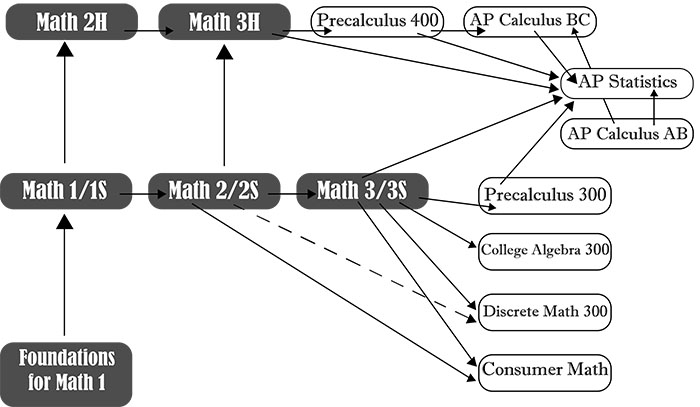Dueling perspectives: tracking in course curricula
January 25, 2019
Tracking lets students challenge themselves according to their abilities.
Tracking is the process of placing students in different courses based on their ability in certain subjects. I personally believe tracking is beneficial to education because it challenges students to further their thinking. Students in AP and honors classes choose these classes because they want that challenge.
Students who want a challenge or love to learn new things have the opportunity to do so if they take AP or honors classes. These classes teach kids more than just higher level topics for certain subjects – they teach students responsibility and time management skills. With more work and deadlines, they help students manage their time and learn how to turn in assignments when they are due. Kids also learn responsibilities like turning homework in on time, doing their work and trying their best through these higher level classes. The average level and lower levels learn the same skills but in different ways. Through these skills and working together, these kids will learn to get to the main idea.
Kids in courses like Math 1S are in those classes because they face struggles while learning. These classes are meant to help people learn the material in an environment that is suited for them. Being with kids at the same learning level helps them to work together with people who are in the same boat.
Students also take higher level classes in order to receive college credit. Many classes here at DGS have an AP version that anyone can take. These classes prepare kids who want to go to college as well as kids who want a challenge. They also allow students to get credit in high school to apply to their degree, which saves money and time in the long run.
From what I have seen in classes, students who struggle with material and work with students who know what they are doing are just given the correct answer without understanding why the answer is what it is. I personally connect to this because I was in Honors Biology and Chemistry when I shouldn’t have been, so I never understood the material and was confused every day. I struggled and the other kids told me the answers and acted as if I knew nothing which is not how I want to feel at school. I dropped down to Physics 300 and to this day do not regret it.
Although people feel that tracking is limiting kids on their abilities, I personally believe that tracking has many benefits because of the life lessons it teaches and the challenge that certain kids want to take.
Tracking denies all students an equal opportunity to succeed.
Tracking is the practice of classifying students based on academic capability. The process of tracking classes before high school can limit students in their ability to succeed and advance. I am not against more challenging courses in high school; however, I do not believe lower-level tracking is beneficial to students.
As a 10-year-old going into 5th grade, I received a letter in the mail telling me I was a “gifted” child and would be placed in an advanced class for the coming school year. While I realize the curriculum in 5th grade is not as challenging as junior high or high school, with these high expectations set for me, I aimed to fit the standards of being a “gifted student.” Students tend to strive for the expectations that are set for them, whether that be overachieving or underachieving.
In professor Mike Rose’s “Lives on the Boundary,” he wrote about his experience in school. Upon his enrollment at Our Lady of Mercy, his (above average) test scores were mistaken with another person’s below average scores. Rose was placed in classes that were below his level of comprehension.
“Students will float to the mark you set. I and the others in the vocational classes were bobbing in pretty shallow water,” Rose said.
While Rose’s test scores proved him to be an “above average” student, being placed in lower classes did not help him. Rose did not succeed his other classmates, he struggled along with the rest of the class. Even though Rose was an above average student, the class level he was placed in affected his performance.
In most cases students are put into honors or regular classes at an early age, effectively assigning a role to a given student early on and making it difficult to change levels of classes.
While tracking may be beneficial for students placed in honors or AP classes, those in lower level classes are given the label of not being as smart or being a “regular” student. These separations occur as early as elementary school, dividing children based on how they scored on a handful of tests.
Honors students usually stay in honors/AP classes and regular level students stay in regular classes. Tracking should not be put in place so early in a student’s life. There should be options for students in high school to take different levels of classes, but not any sooner than high school.
At the beginning of one’s education, the challenges and availability of support given should be equal to every student, as to avoid labeling and placing children into boxes based on their perceived academic capabilities. In high school, I support challenging courses and high-level classes in order to receive college credit. Although I believe the issue of underachieving students and overworked honors kids stems from the labels of capacity given to students at an early age.
Instead of separating students out into lower or higher levels, all classes should offer the same amount of support. An example of this would be extra time, tutors, and other education support tools. All classes prior to high school education should have the same curriculum.
This gives all students the equal opportunity to succeed and does not assign students to roles based on capability so early in their educational careers.


